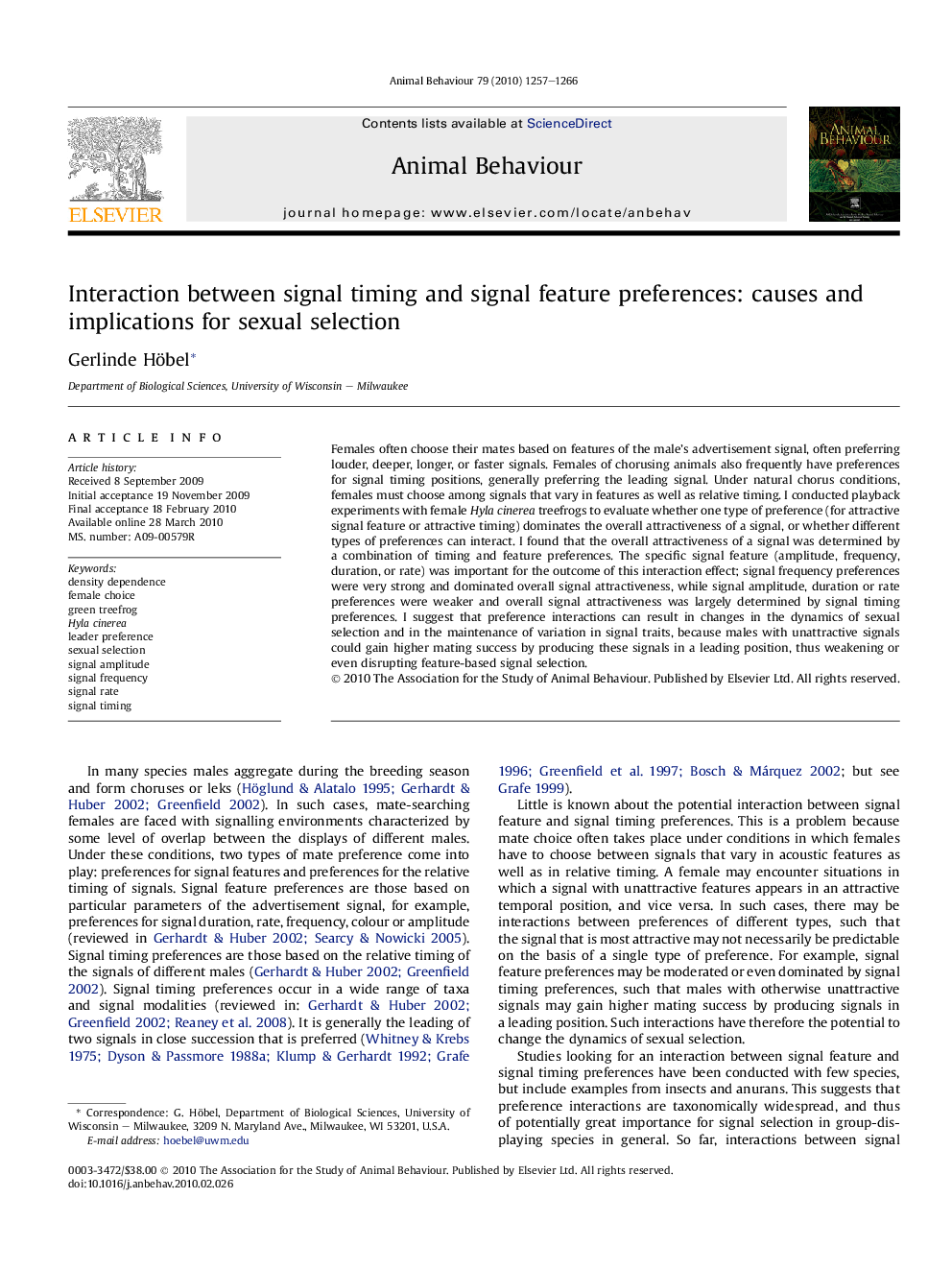| کد مقاله | کد نشریه | سال انتشار | مقاله انگلیسی | نسخه تمام متن |
|---|---|---|---|---|
| 2417237 | 1104313 | 2010 | 10 صفحه PDF | دانلود رایگان |

Females often choose their mates based on features of the male’s advertisement signal, often preferring louder, deeper, longer, or faster signals. Females of chorusing animals also frequently have preferences for signal timing positions, generally preferring the leading signal. Under natural chorus conditions, females must choose among signals that vary in features as well as relative timing. I conducted playback experiments with female Hyla cinerea treefrogs to evaluate whether one type of preference (for attractive signal feature or attractive timing) dominates the overall attractiveness of a signal, or whether different types of preferences can interact. I found that the overall attractiveness of a signal was determined by a combination of timing and feature preferences. The specific signal feature (amplitude, frequency, duration, or rate) was important for the outcome of this interaction effect; signal frequency preferences were very strong and dominated overall signal attractiveness, while signal amplitude, duration or rate preferences were weaker and overall signal attractiveness was largely determined by signal timing preferences. I suggest that preference interactions can result in changes in the dynamics of sexual selection and in the maintenance of variation in signal traits, because males with unattractive signals could gain higher mating success by producing these signals in a leading position, thus weakening or even disrupting feature-based signal selection.
Journal: Animal Behaviour - Volume 79, Issue 6, June 2010, Pages 1257–1266